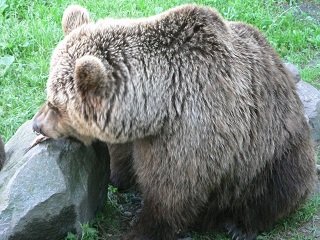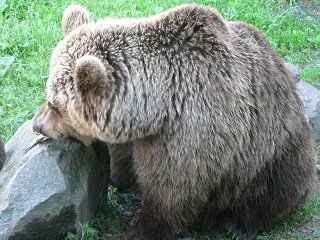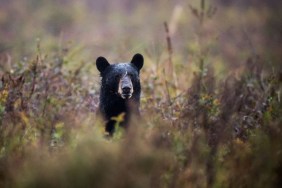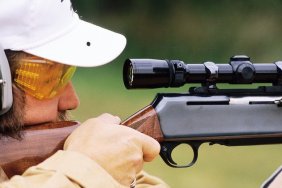 Stalking bears is one of the hardest and most rewarding activities a hunter can ever be a part of. If someone is successful, it means they not only beat a bear’s senses, but it also means they evaded any potential danger. If you are interested in stalking bear, here are some tips that can help you accomplish your goal.
Stalking bears is one of the hardest and most rewarding activities a hunter can ever be a part of. If someone is successful, it means they not only beat a bear’s senses, but it also means they evaded any potential danger. If you are interested in stalking bear, here are some tips that can help you accomplish your goal.
Once a bear is spotted, there is no recipe for success. Many things have to be considered while determining if a bear qualifies for a stalking effort. For example, is there enough daylight left for a stalk? Is the wind favorable? Is the bear heading in a direction in which you will be able to intercept it or catch up to it?
A good bear hunter will weigh all variables and make a methodical decision whether a bear is worthy of pursuing.
What is the bear doing? If the bear is foraging, you are in the game for sure. If the bear is traveling to a feeding or bedding area, then you have to weigh your chances of closing the distance. As a general rule, a bear walking straight away from you cannot be caught; however, if a bear is walking away from you at an angle, you have a chance depending on topography and natural obstacles
To set things in motion, a hunter will need to create a quick strategy. A thorough hunter will take note of terrain, wind, etc. and make an alternate plan of action in case the bear does not follow plan A, which they never do. Despite all the planning, always remember that the most important sense that you need to beat on a bear is its nose. Always the nose. I always carry a scent-checking powder to keep track of air currents.
Like all predators, a bear can see best when looking straight ahead so keep that in mind if your bear looks in your direction. Bears get a bad rap for their eyesight, but seasoned bear hunters and guides will confirm that bears can see long distances.
Finally, be prepared. Be in shape and know your physical limits. Bears are the heartiest of animals and chasing one down is easier to read about than to accomplish.








